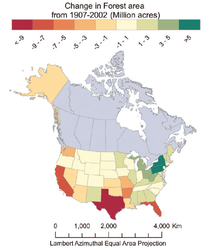Another side effect of cheap PV....the death of the 'Passive House'?
An oldie from Holladay:
http://www.greenbuildingadvisor.com/blogs/dept/musings/net-zero-energy-versus-passivhaus
In current new construction, the lowest 'cost of ownership' option is to build a house with about half the insulation level of a Passive house (but still about 2-2.5x thicker than a current best code), put in all electric heat and DHW, and throw enough solar panels on the roof to get to Net Zero Energy, on a seasonal basis with a grid-tie system. IOW, the savings on the insulation and extra framing materials more than pay for enough PV to make up the difference in recurring energy costs, at today's prices. The amortized cost of the resulting NZE house is lower than passive house, due to lower construction costs, and also slightly lower than a code built house, due to lower utility bills for the 20-30 year life of the PV.
Think about it...a normal looking, mainstream, low maintenance house that adds no (net) energy usage to the grid, and uses no FF. This was a dream in the 70s, and now you can just go buy one. No muss no fuss.
In green circles the Passive/NZE wars have been raging for a few years now...the originator of the Passive Haus concept appears to be solidly against building less insulated houses + PV, despite them being cheaper, using less materials, and consuming less energy. In the US, there are multiple entities that certify Passive house, and some are moving towards NZE, some are not. So sad.
---------------------------------------------------
Of course the big issue was always legacy housing stock. In round figures, we can characterize thermal performance with a Home Heating Index (HHI) in units of BTU/sq.ft.HDD. Ten years ago, the median figure for US houses was 10, with a standard deviation of 3-4. Leaky old barn houses were 13-15, tight energy efficient houses were 7.
On this scale, Passive Houses are '1', needing just 10% as many BTUs as a typical 2004 US house (can 'heat with a hairdryer').
The sweet spot for NZE houses these days is '2', needing 2x as many BTUs as a Passive house.
In contrast, current best code houses (most states still use older codes) are about '5' or so, using half as much energy as typical houses in 2004.
In terms of retrofit, a typical US house might have been built at 15 before the 70s, or at 10 afterward. Many older houses were insulated in the 70s, going from 15 to ~10.
The good news:
The current 'airseal and upinsulate' retrofit work in the US can take most houses to the 5-7 range for $3-7k (often covered nearly 'free' by utility billing programs), and just a few days of work, and pays back in 5-10 years (if not subsidized). The resulting houses are much more comfortable, less drafty, healthier, have better humidity control summer and winter, and have better indoor air-quality (provided no indoor smokers or allergen sources).
The bad news:
Taking most US houses well below the 5-7 range, like 1-3, a 'deep energy retrofit', requires such extensive work that the cost can be $50-100k, and the payback is usually not there unless you
assume a very long amortization and (usually) very expensive future energy. No new technology to fix this appears to be in the offing, as it requires destroying the entire interior or exterior detailing (or both) to do the work.
In energy circles, this seemed to put a floor under future home energy use....turning over all the housing stock in the US will take many decades, not 15-20 years, appearing to lock in a HUGE amount of FF demand/usage before 2100.
Progress:
Houses that have been (cheaply) airsealed/retrofit to the HHH= 5-7 range can be comfortably heated with affordable (<$10k retrofit) air-source heat pumps, at annual energy costs that are well below what many folks pay now (e.g. for oil or propane). While these houses are unlikely to become NZE houses (their roofs are too small by about half for the PV required to cover space heating/cooling or oops, point in the wrong direction), in a future PV+storage grid in the US, all these houses can be FF/CO2 free at reasonable cost (for retrofit and energy bills).
Of course, the above ASHP claim currently does not apply to folks with climates much colder than say, Boston, but still covers a significant majority of the US population. And the practical cold limits of ASHPs are still improving.
So, progress in modern ASHPs allows us to affordably 'decarbonize' most of US residential energy usage in existing houses when the PV gets built out, in perhaps as little as 15-20 years.
We won't get a 'Post Peak Oil' world where the lucky/smart/rich few are comfortably living in villages of 'resilient' Passive houses each heated by burning a small bundle of sticks, while the hoi polloi are freezing in their nearly unheated legacy houses in grubby coats.
Instead, folks will be able to safely and comfortably heat their existing houses, which have been retrofit to use efficient electrical heat (in many houses the 3rd or 4th different fuel since it was built), using effectively zero-carbon power (from off-site 'industrial' PV and grid storage), at a utility cost roughly comparable to the best late 20th century rates.





